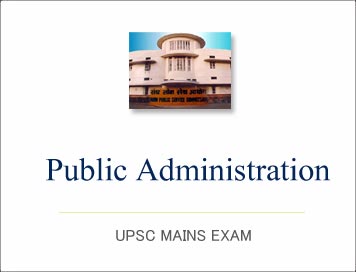Public Administration Mains 2022 : Solved Paper-1 (Question: 4)

Public Administration Mains 2022 : Solved Paper Question Paper-1 (Question-4)
SECTION-A
Q4.(a) ‘Leadership is seen as dealing with change, whereas administration is viewed as coping with complexity.’ In this context, discuss the contextuality of leadership and administration for the success of organisations. (Introduction)
There are a few distinctions between the two positions, despite the fact that you would need both administrative leadership skills to ensure organizational efficiency. Leadership, on the other hand, entails providing direction to shape the company's goals and motivating employees to achieve them. Administration involves delegation of responsibilities and authority. Administration can be thought of more as a precise science; There is a lot of planning, measuring, and standardizing involved. On the other hand, leadership is more of an art that involves motivating others and coming up with plans and visions.
There are numerous connections between administration and leadership, despite their differences. Both ideas contribute to the organization's overall improvement. If they want their subordinates to respect them, a good administrator needs to be able to lead. In a similar vein, leaders in the workplace require a wide range of administrative abilities, such as scheduling and resource management.
In order to ensure that the organization is effective and that its goals are met, leadership and administration must work together. For a successful corporate career, you will therefore need to develop both sets of skills. The executive training workshop at Toronto School of Management is something you should check out if you want to work in management or administration. You'll learn important business skills and gain a solid understanding of international business practices from it.
(b) Regulatory governance frameworks have become essential building blocks of world society. Discuss their potential and impact in fulfilling the hopes and demands. (Administrative Thought)
ANSWER: ONLY FOR COURSE MEMBERS
(c) Social auditing is not just saving the money, it creates positive impact on governance. Comment. (Administrative Behaviour)
The process of sharing with the public, often through a public platform, information about the resources—both financial and non-financial—that public agencies use for development projects is known as social audit. People can enforce accountability and transparency through social audits, giving the end users a chance to examine development initiatives. It has a positive effect on governance and improves a scheme's efficiency and effectiveness. The purpose of a social audit is to determine whether or not a benefit intended for an individual or community has been received. It values the opinions of stakeholders, including those from underrepresented or disadvantaged groups, whose voices are rarely heard. For e.g., The Gram Sabhas were given the authority to perform social audits in addition to other duties by the 73rd Amendment to the Constitution. The requirements of the auditing field are combined with people's participation and monitoring during the social audit process. Social auditing is being used to improve local governance, particularly by making local bodies more accountable and transparent. Social audits on a regular basis aid in increasing system transparency and accountability. In addition, regular "Social Audits" are mandated by Section 17 of the National Rural Employment Guarantee Act of 2005 (NREGA) to guarantee the scheme's transparency and accountability. In addition to environmental and economic issues, the social audit focuses on the neglected issue of social impacts, which aids in the comprehensive evaluation of a policy.
